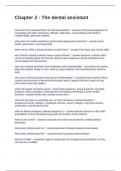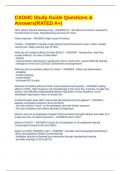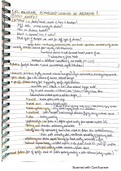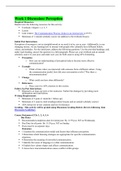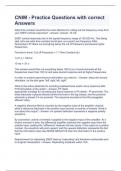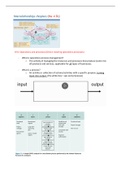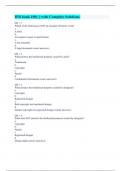CELL CYCLE.................................................................................................................................................... 1
INTRODUCTION............................................................................................................................................ 3
TRADITIONAL METHODS OF STUDYING THE CELL CYCLE..................................................................................................3
MODEL SYSTEMS FOR STUDYING THE CELL CYCLE..........................................................................................................3
PHASES OF THE CELL CYCLE......................................................................................................................................3
DIFFERENT TYPES OF CELL CYCLES.............................................................................................................................3
CHECKPOINTS IN THE CELL CYCLE..............................................................................................................................4
REGULATORS IN CELL CYCLE....................................................................................................................................4
Dominant M-phase Factor:............................................................................................................................4
Dominant S-phase factor:...............................................................................................................................4
Block to DNA re-replication:...........................................................................................................................5
REGULATION OF THE G2/M CHECKPOINT...................................................................................................... 5
IDENTIFICATION OF MPF........................................................................................................................................5
Discovery of Maturation Promoting Factor (MPF): the dominant M-phase factor.......................................5
Polar Bodies....................................................................................................................................................6
IDENTIFICATION OF MITOTIC CYCLIN..........................................................................................................................6
GENETIC ANALYSIS OF THE CELL CYCLE......................................................................................................................7
Isolation of cell division cycle (cdc) mutants..................................................................................................7
Characterization of cell cycle mutants...........................................................................................................7
Cloning by complementation of cdc2ts, wee1ts, cdc25ts and cdc13ts mutants.................................................7
What did the cloning tell us?.....................................................................................................................................8
Cloning of wee1, cdc25 & cdc13.....................................................................................................................8
MITOTIC PROMOTION FACTOR (MPF) = P34CDC2 & CYCLIN B.........................................................................................9
CELL CYCLE.................................................................................................................................................... 9
Raising antibodies to cdc2..............................................................................................................................9
i. Does the anti-cdc2 antibody cross-react with a protein in the partially purified Xenopus MPF fraction?..9
ii. Do any other proteins in the MPF fraction co- immunoprecipitate with the anti-cdc2 antibody?............9
Mechanism of co-immunoprecipitation assay:.........................................................................................................9
Results:.........................................................................................................................................................10
iii. Does the co-immunoprecipitate have MPF activity?...............................................................................10
Results:.................................................................................................................................................................... 10
DOSAGE EFFECT OF WEE1, CDC25 AND CDC2 ON THE CELL CYCLE................................................................................10
Results:.........................................................................................................................................................11
ROLE OF CYCLINB................................................................................................................................................ 11
In Vitro assay for cell cycle...........................................................................................................................11
Findings:.................................................................................................................................................................. 11
Is the mitotic cyclin B required for MPF activity?.........................................................................................12
Is cyclin B degradation required for exit from the cell cycle?.......................................................................12
Regulation of cyclin B degradation..............................................................................................................12
PHOSPHORYLATION REGULATION:...........................................................................................................................13
Experimental Questions:...............................................................................................................................13
Experimental Tools:......................................................................................................................................13
Experimental procedure:..............................................................................................................................13
1. Does the phosphorylation status of Cdc2 change during the G2/M transition?......................................14
2. Which amino acids are phosphorylated on Cdc2?...................................................................................15
Assay:......................................................................................................................................................................15
Which tyrosine is phosphorylated and dephosphorylated?....................................................................................15
Inhibitory effect of Y15-P:.......................................................................................................................................15
Wee1 & Mik1 phosphorylate cdc2 (cdk1) on Y15.........................................................................................16
Analysis of mik1 and wee1 mutants........................................................................................................................16
Cdc25 dephosphorylation of cdc2(cdk1)......................................................................................................16
Assay:......................................................................................................................................................................16
WHAT ARE THE TARGETS OF ACTIVE MPF?..............................................................................................................17
SUMMARY:.........................................................................................................................................................17
, Cell Cycle
REGULATION OF THE G1/S CHECKPOINT...................................................................................................... 17
CDC2/CDC28 IS REQUIRED FOR START (THIS CHECKPOINT).........................................................................................17
Budding Yeast Life Cycle...............................................................................................................................17
IDENTIFICATION OF G1 CYCLINS:.............................................................................................................................18
Genetic/Mutant screen in S. cerevisiae........................................................................................................18
Dosage effects of G1 cyclins.........................................................................................................................18
CELL CYCLE IN S. CEREVISIAE..................................................................................................................................18
IDENTIFICATION OF MAMMALIAN CYCLINS & CDC2 HOMOLOGUES (CDK1, CDK2…CDK5)...................................................18
Cyclin D is required for the G0 to G1 transition in mammalian cells............................................................19
IDENTIFICATION OF MAMMALIAN CYCLIN-DEPENDANT KINASES (CDKS)..........................................................................19
REGULATION OF MAMMALIAN CELL CYCLE...............................................................................................................20
IDENTIFICATION & CHARACTERIZATION OF CDK INHIBITORS..........................................................................................20
Identification of p16 in association with cdk4..............................................................................................20
Assay for cdk4/cyclinD activity.....................................................................................................................20
TUMOUR SUPPRESSORS: RB & P53.............................................................................................................. 21
CDK INHIBITORS P16, P21, P27.............................................................................................................................21
CANCER GENETICS AND THE RETINOBLASTOMA GENE.................................................................................................21
Action of Rb Protein......................................................................................................................................21
P53 – MOST FAMOUS TUMOUR-SUPPRESSOR GENE...................................................................................................22
DNA DAMAGE............................................................................................................................................. 23
DNA DAMAGE RESPONSE GENES...........................................................................................................................24
DNA DAMAGE CONTROL AT G2/M CHECKPOINT.....................................................................................................24
Experimental Evidence:................................................................................................................................24
DNA DAMAGE CONTROL AT G1/S CHECKPOINT.......................................................................................................27
Question: When cells are exposed to gama-irradiation, do Cdc25A levels affect progress through the S-
phase?..........................................................................................................................................................27
P53 Independent Pathways..........................................................................................................................28
P53 Dependant Pathways............................................................................................................................28
CANCER...................................................................................................................................................... 29
........................................................................................................................................................................ 29
PROPERTIES OF CANCER........................................................................................................................................30
Multi-Hit model............................................................................................................................................30
Cancer Phenotype.........................................................................................................................................31
TUMOUR SUPPRESSOR GENES................................................................................................................................31
Properties:....................................................................................................................................................31
PROTO-ONCOGENES AND ONCOGENES....................................................................................................................31
DNA TUMOUR VIRUSES........................................................................................................................................32
CANCER TREATMENT & DIAGNOSIS............................................................................................................. 32
IONIZING RADIATION:...........................................................................................................................................32
CHEMOTHERAPY..................................................................................................................................................33
Mechanisms of action of different types of Drugs in Chemo:......................................................................33
HORMONAL TREATMENTS.....................................................................................................................................34
CANCER DIAGNOSIS.............................................................................................................................................34
COMBINE RADIATION TREATMENT WITH WEE1 INHIBITORS..........................................................................................34
, Cell Cycle
Introduction
Traditional methods of studying the cell cycle
DNA Replication
- 3H-Thymidine incorporation
o Inject autoradiated thymidine into cell then use autoradiography to see if its
been incorporated into the DNA
- Artificial Thymidine analog Bromo-deoxyuridine (BrdU)
o Readily incorporates opposite Adenines.
o If cell is replicating then BrdU will be incorporated
o Fluorescently labelled anti-BrdU antibodies will show up if cell replication has
occurred.
Model systems for studying the cell cycle
- Mammalian cells proliferating in culture
- Genetic analysis in budding yeast
- Animal embryos: Xenopus & sea urchin eggs
Phases of the cell cycle
G1 Phase:
- Immediately after mitosis
S phase:
- DNA Replication
G2 Phase:
- Before mitosis
M Phase:
- Mitosis
G0 Phase:
- After mitosis if cell leaves cycle and stops dividing
Interphase:
- G1 + S + G2
- DNA is diffusely distributed within nucleus
Different types of Cell Cycles
- Embryonic Cell cycles
o Short cycles of constant duration
o Very synchronous
- Growing cell cycles
o Longer cycles of variable duration
, Cell Cycle
- Reversible exit from cell cycle
o Some cells stop growing and leave the cycle until interacted with a growth
factor etc.
Checkpoints in the Cell Cycle
Regulators in Cell Cycle
Dominant M-phase Factor:
- 1970s: Cell fusion experiments showed that there were different regulators at
different stages of the cell cycle
- Active during Mitosis
- Synchronized mammalian cells, mixed cells in presence of virus or chemical agent
that caused their membranes to fuse- formed hybrid cells
- Results:
o G1 fused with M phase cells = chromatin immediately condensed
o G2 fused with M phase cells = chromatin immediately condensed
o S phase fused with M phase cells = chromatin immediately condensed
- Conclusion:
o Dominant M-phase factor
o Mitotic cells must contain a diffusible factors that induce mitosis when
introduced to cells at other stages of the cell cycle
Dominant S-phase factor:
- When G1 and S cells fused
- G1 cells immediately began to replicate their DNA
- Conclusion:
o Factors from S phase cell must induce DNA replication in G1 nucleus – hybrid
cell delays mitosis until replication has completed.
o S-phase factor induces DNA replication



